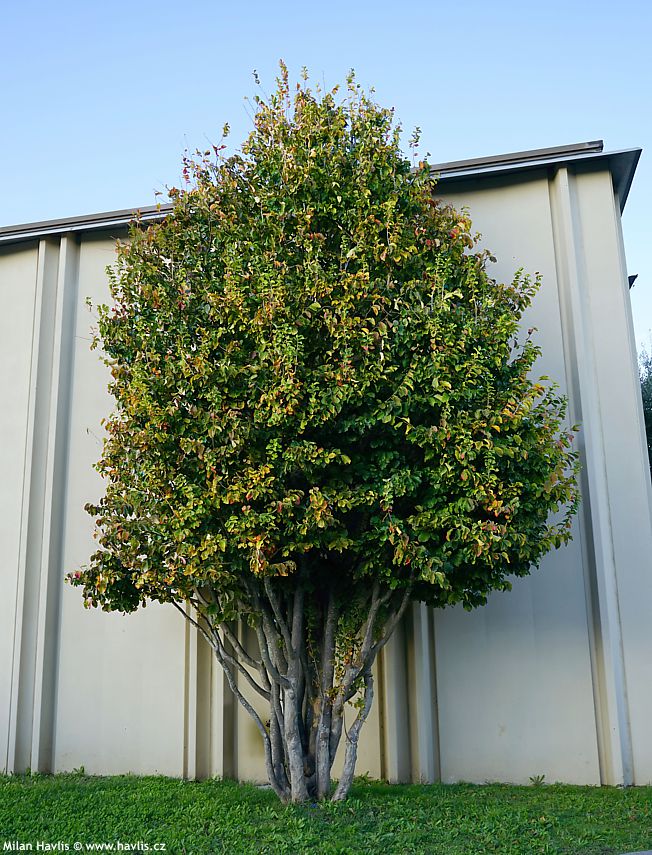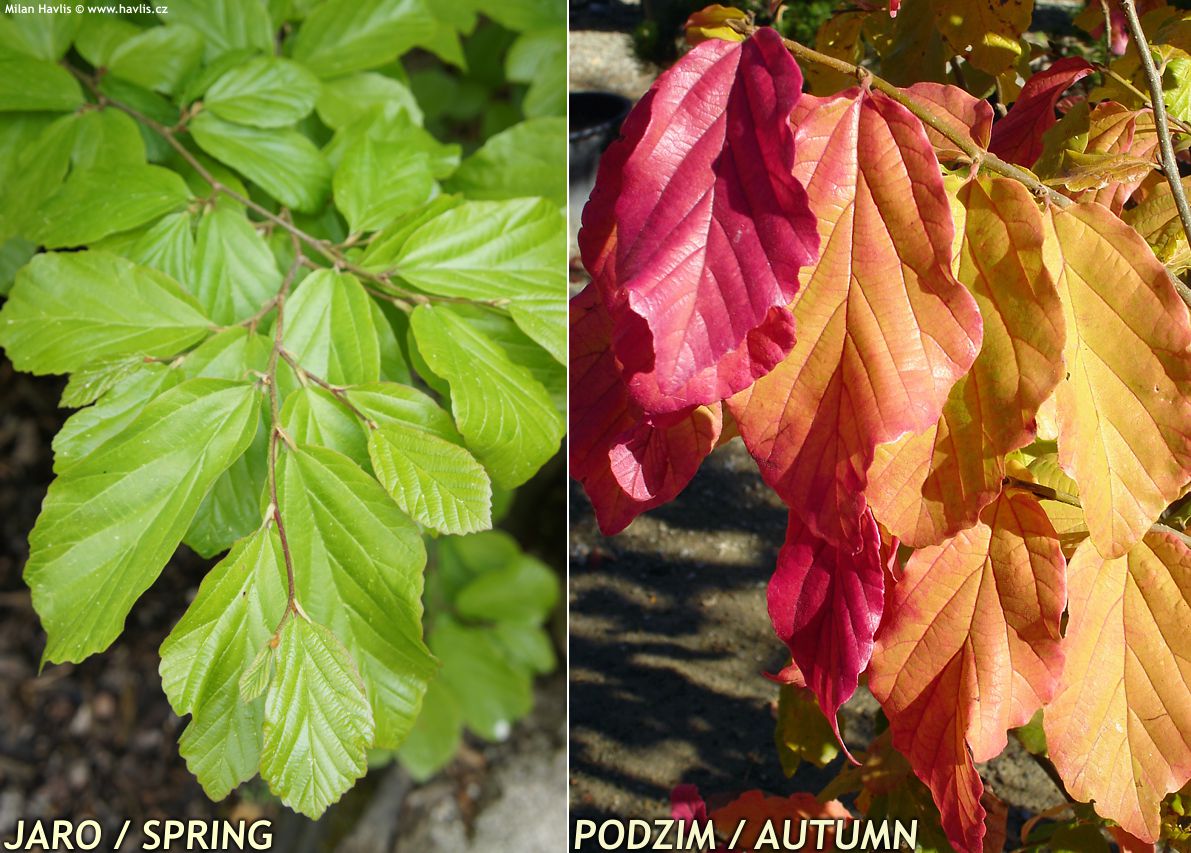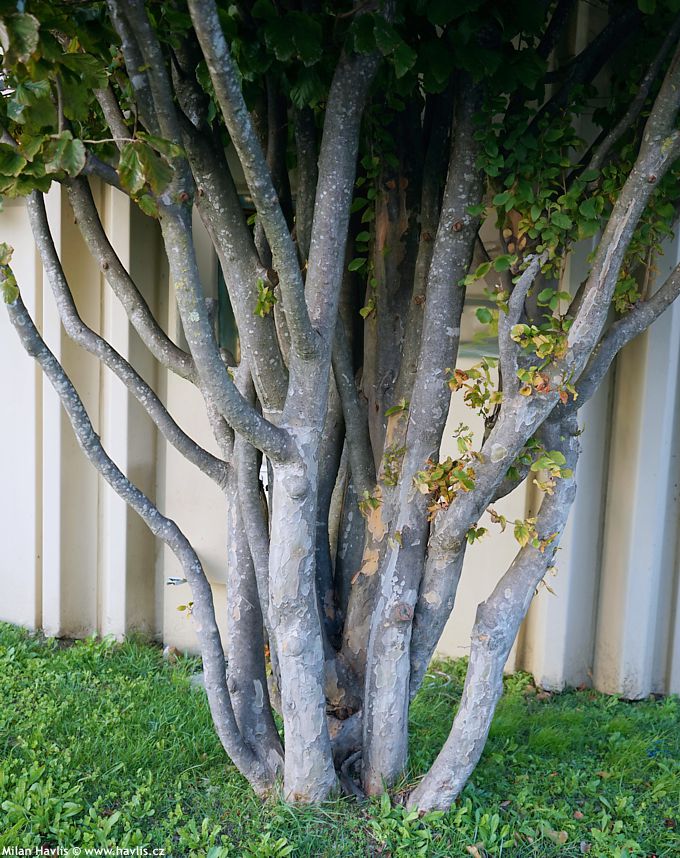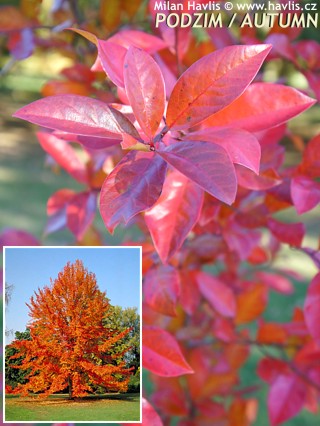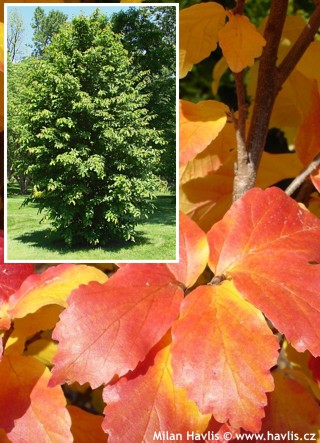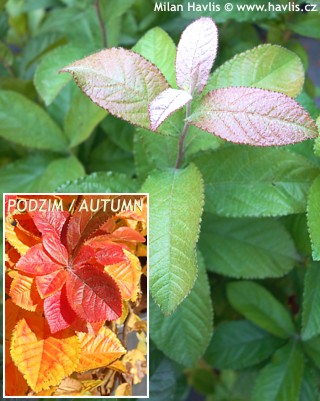Parrotia persica Persian ironwood


Persian ironwood is a deciduous, usually multi-stemmed tree with beautiful leaves which prove its inclusion in the witch-hazel family (hamamelis, corylopsis, fothergilla, etc.). Its leaves are smooth and glossy, broadly oval, similar to beech but about twice as large: 6-15 x 4-10 cm, with conspicuous veins. They are light green from spring till summer and in autumn they take on a dazzling show of warm colours: salmon, orange, and deep yellow, gradually tone after tone from the ends of the twigs to the trunk. The flowers are tiny clusters of crimson red stamens and bloom in late winter. They cannot be seen from a distance which does not mean they are uninteresting, I myself believe that they are definitely worth coming closer so you can appreciate them when your tree has reached flowering age.
It grows quickly, both when young and later, and naturally forms beautiful frameworks of more stems at its bottom part. Only a light touch of clippers or a handsaw is needed to eliminate weaker, inferior branches making the dominant trunks stand out. They are grey, smooth, and as they age they peel off think flakes revealing an attractive plane-tree-like mosaic in pale shades of cinnamon, grey, pink, and green. With more effort a single-terminal tree can be trained if you don't have room to accommodate a wide multistem above the ground level.
The information about its adult size varies. The RHS encyclopaedia states 8 meters, Wikipedia goes up to even 30 m but no individual of such height has been documented. So far the largest specimen on record lives in the Morris Arboretum in Philadelphia, USA, and it reached 15 meters in 2010. Unfortunately, we have not been able to ascertain its age. In either way, Persian ironwood is long-lived and does not suffer from diseases or pests.
Find a spacious and sunny spot in your garden where its structure and autumn colouring in warm tones will dominate. For best contrast, you can combine it with shrubs or trees producing stronger autumn colours with cold tones (liquidambar, acer palmatum, etc.). It likes fertile, deep soil, moist but well-drained soil. Acid soils will enhance its autumn colours. Otherwise, it is undemanding and very easy to grow: apart from occasional watering in its first year in the ground it needs nothing but admiration. Pruning can be done from late winter until early spring. Fully hardy to approx. -34 °C.
Last update 22-10-2006; 21-01-2024
Goods are shipped all over Europe. For Russia and U.K. and for further details please read about SHIPPING OPTIONS HERE.
Are you interested in a serious discount for orders NOV-FEB? Check your options here.
THE PRICES INCLUDE VAT of 15%. For quick conversion you can use 1 CZK = approx. 0.04 EUR
- STANDARD QUALITY - Plants of this group are 1st class quality with number of branches and overall density adequate to their size and age, considering they were container grown.
- DE LUXE QUALITY - This label guarantees a luxurious quality of manually selected plants that, compared to their height and age, are exceptionally dense and beautiful.
- EXTRA - These plants are usually mature and bigger specimens with exceptional overall appearance.
- STANDARD (as described in the plant form) means a tree with a trunk of 190-210 cm and a crown at the top, unless specified differently. The commercial size for trees is their girth measured in the height of 1m from ground.
- HOBBY - These plants are of the same quality as our standard-quality plants but younger and therefore cheaper.
- SHRUB - a woody plant with branches growing bushy from the ground level.
- HALF-STANDARD or MINI-STANDARD - a small tree with shorter trunk, its size is usually specified.
- FEATHERED - These are trees with branches growing already from the base of the trunk and up along the stem.
- GRASSES and PERENNIALS - Sizes given usually read the diameter of the pot or the clump, as specified.













